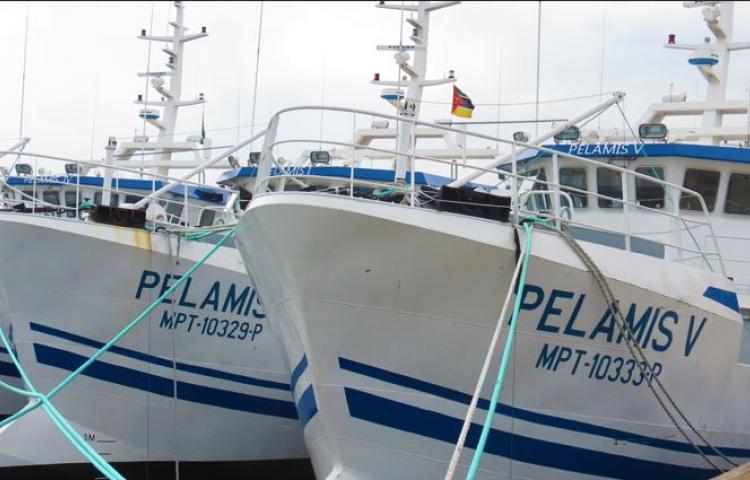Mozambique: International Reserves renew four-year highs
Mozambique Government Ratifies Ematum Deal

The Mozambican government on Tuesday ratified the deal under which the securities issued by the Mozambique Tuna Company (EMATUM) in 2013, are replaced by sovereign government bonds with a longer repayment time, but at a higher interest rate.
Speaking after the weekly meeting of the Council of Ministers (Cabinet), the government spokesperson, Deputy Health Minister Mouzinho Saide, said that the agreement now ratified was signed in Maputo on Monday between the government and the two banks which had arranged the original loan issue, Credit Suiise and VTB or Russia.
This was only possible after the great majority of the bondholders – 81.5 per cent – had agreed to the swap.
The bonds issued in 2013, were for 850 million US dollars. The stated purpose behind raising these funds was to purchase, from a shipyard in the French port of Cherbourg, 30 vessels – 24 tuna fishing boats, and six modern military speedboats for maritime and coastal protection duty.
The repayment terms were extremely tough – the money was to be repaid over seven years, with a two year grace period, and at an interest rate of LIBOR (London Inter-Bank Offered Rate) plus 6.5 per cent.
The proposal accepted by the bondholders is that the EMATUM bonds (now down to US$697 million, after the first repayments) will be swapped for government bonds for US$585.5 million that mature in 2023. The interest rate, however, shoots up to 10.5 per cent.
For the government, the advantage is that it will not have to repay the capital until 2023. Until then it will only be obliged to make annual interest payments. The government’s assumption is that by 2023 revenue will be flowing in from the vast natural gas fields in the Rovuma Basin, off the coast of the northern province of Cabo Delgado. The export of liquefied natural gas (LNG) is expected to begin in around 2020, and the forecast is that Mozambique will become the third largest exporter of LNG in the world.
“Ratification of this agreement means that Mozambique will benefit from repayment terms that are more satisfactory for the country’s public finances”, said Saide.
The government now has an extra two years to repay, and the yearly burden on the treasury falls from the current US$200 million to about US$76 million. Saide said this figure would be paid in instalments of US$38 million every six months.
Much of the EMATUM bond remains shrouded in mystery. The information published in the French press in 2013 was that the 30 vessels purchased cost 200 million euros (about US$230 million). So what was the rest of the money – US$620 million – spent on?
When the then Fisheries Minister, Vitor Borges, was asked this question in parliament in December 2013, he said it was to cover such items as training, transfer of technology, radars, satellite communications and onshore installations.
But neither he, nor any other government spokesperson, has ever given a breakdown of these costs.
By taking over the entirety of the EMATUM debt, the government effectively admits that EMATUM is in no position to pay anything,
It was always clear that EMATUM could not show a profit in the first couple of years of operation. Even so, the company’s financial statements, published in May 2015, showed alarmingly high losses. Those accounts revealed that in 2014 EMATUM made a loss of over 850.5 million meticais (about US$24.9 million). The accumulated losses, from 2013 up to December 2014 were 1.17 billion meticais. EMATUM’s own funds were thus deeply in the red, at minus 1.16 billion meticais.
So far there is no sign of any financial statements for 2015, and the EMATUM website seems dead. Nothing has been added to the site since June 2015.
According to the government’s figures, in 2015 EMATUM fished just 300 tonnes of tuna. Speaking to reporters in March, the Minister of the Sea, Inland Waters and Fisheries, Agostinho Mondlane, attributed this to the fact that by the end of 2015 only 12 of the 24 EMATUM fishing boats had been licensed.
He was confident that the other 12 ships would be licensed this year, and that the total tuna catch in 2016 would go to over 3,000 tonnes.
An unsourced claim in Wednesday’s issue of the Maputo daily “Noticias” is that EMATUM has the potential to being in 90 million dollars of revenue a year. This is less than half the forecast of early 2015 that, when the entire EMATUM fleet is operational, it will bring in 196 million dollars a year.













Leave a Reply
Be the First to Comment!
You must be logged in to post a comment.
You must be logged in to post a comment.